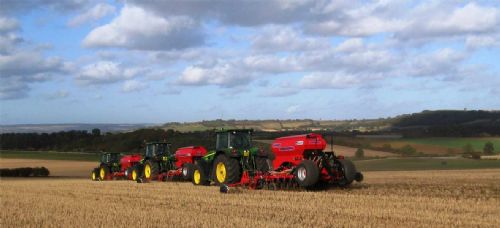
A new soil management guide from Versadrill manufacturer Sumo aims to help farmers avoid the issues that can arise from compacted soils - whether in a dry year like 2011 or in a more normal year.
"Our guide, ’Best Practice for the Versadrill’, looks at the key husbandry issues surrounding crop establishment and the ways in which minimal tillage and direct drilling can be used to manipulate them," says Sumo’s drill specialist, Marcus Ainley. "The issues discussed include soil protection as a part of cross compliance, carbon offset, weed control, slug suppression, encouragement of earthworm populations and conservation agriculture.
"The move towards larger tractors and machinery over the last forty or more years with ever-deeper cultivations – and the use of powered tillage - has left a legacy of damaged soil structure and a reduction of organic matter in the soil. The result is that the land is more susceptible to compaction.
"But it’s not just the power and weight of the machinery or the depth of tillage. At whatever depth they are used, ploughs and discs leave a panned layer underneath the soil surface, creating an impermeable horizontal barrier. And the use of different tillage machinery in unsuitable conditions at different times and depths means this damage could be multi-layered."
Mr Ainley explains that compaction layers caused by mechanical damage restricts the movement of water, air and living organisms through the soil profile. This can have a very significant impact on yield, and makes the crop more reliant on applied fertilisers and chemicals to achieve the desired yields. In extreme cases, mechanical damage means moisture in the topsoil is unable to permeate the pan created by previous cultivations. The saturated topsoil then loses its structure and is unable to support weight.
He notes that waterlogged soil limits the diffusion of gases through soil pores, slowing oxygen influx to the roots and causing injury to the plant. It also impedes the escape of harmful gases such as ethylene and carbon dioxide, which can also lead to reduced growth and root damage, while trapped CO2 also forms ions that can affect the pH level of the soil. Also waterlogging may increase the level of soil-borne fungal diseases that can have an effect on germinating seed. These negative effects have a massive impact on crop productivity, highlighting the importance of getting drainage and soil structure right.
